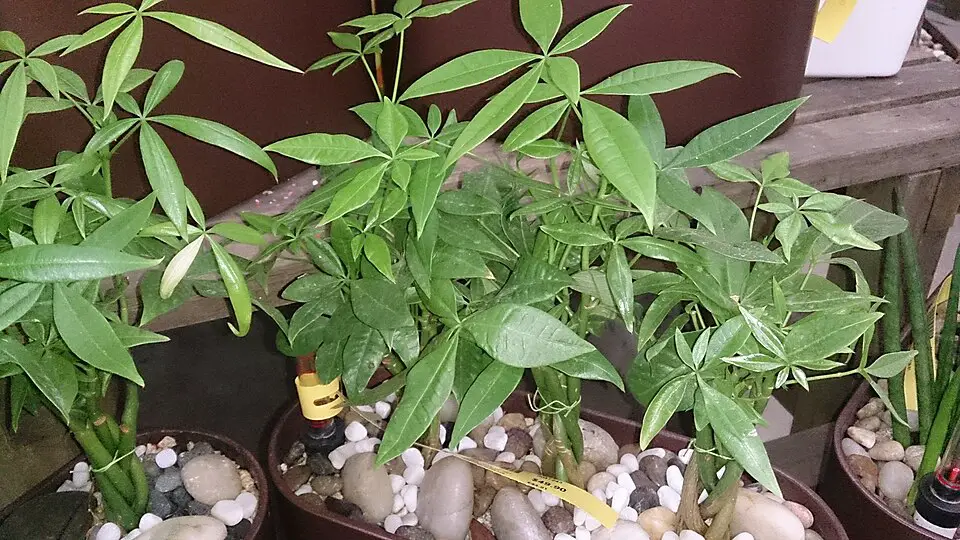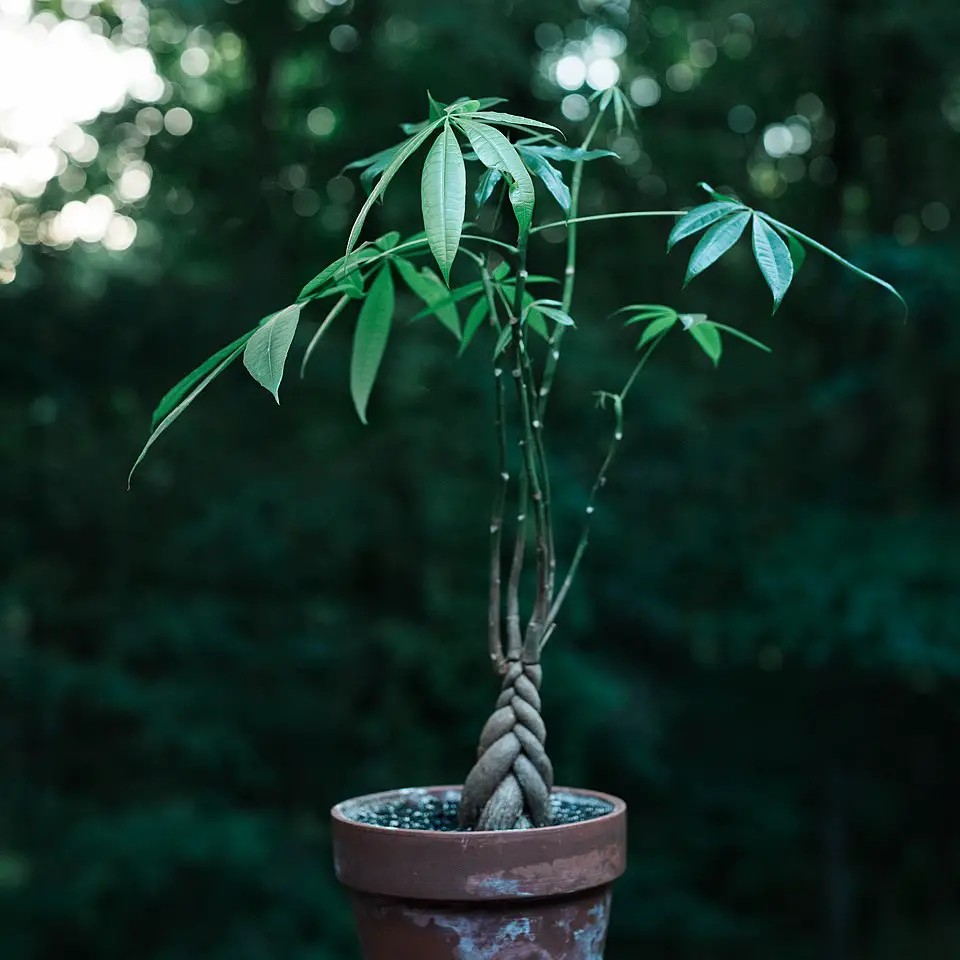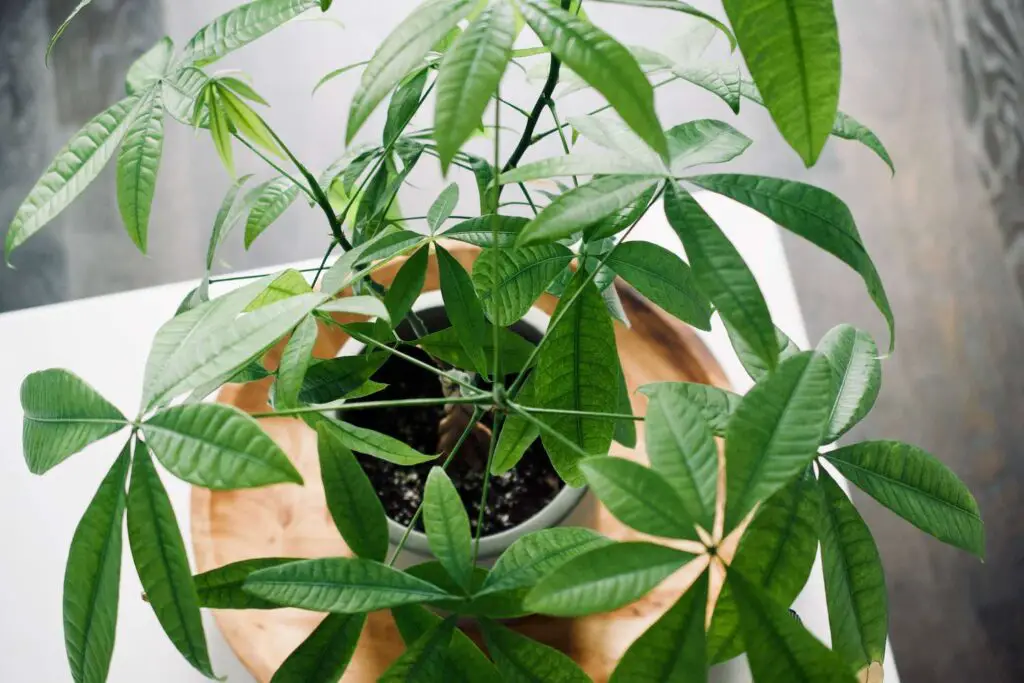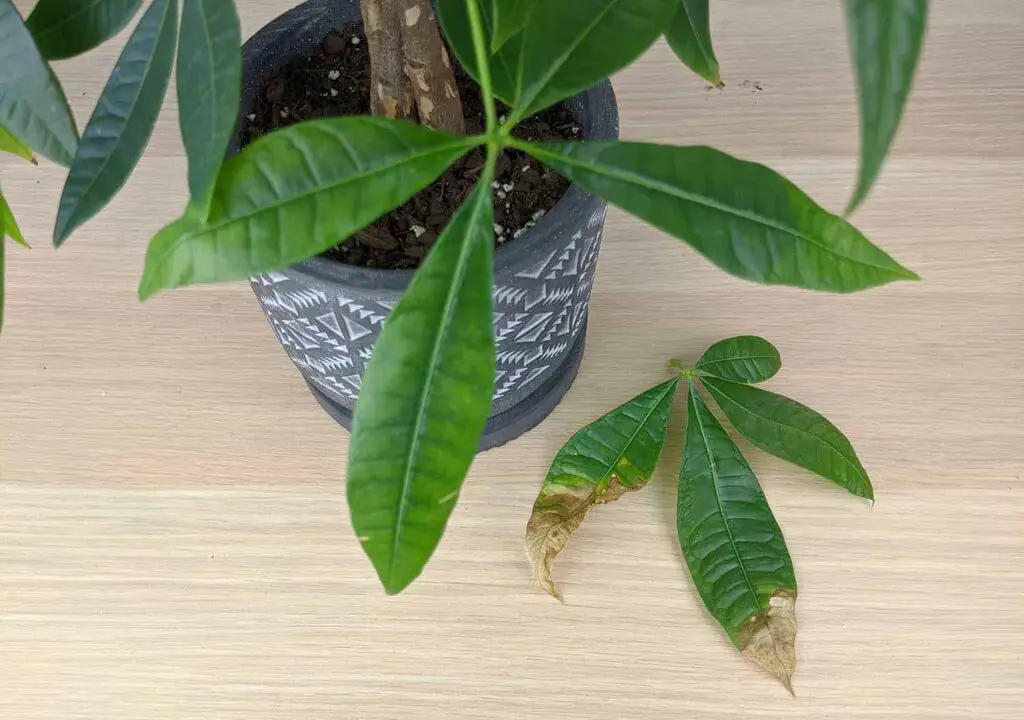The Money Tree bonsai is an ideal compact plant for urban spaces due to its small size, low maintenance needs, and unique aesthetic appeal. It thrives indoors, making it a popular choice for apartment dwellers looking to add greenery to their living environments.
Understanding the Money Tree Bonsai
The Money Tree bonsai, scientifically known as Pachira aquatica, is a tropical tree native to Central and South America. This plant has gained popularity worldwide, especially in urban settings, because of its ability to adapt to various indoor conditions. Its braided trunk and lush, green leaves not only beautify spaces but are also believed to bring good luck and prosperity.

In addition to its aesthetic value, the Money Tree bonsai is quite forgiving and resilient, making it perfect for both novice and experienced plant enthusiasts. With the right care, it can thrive in limited light conditions and does not require excessive watering, which is beneficial for those with busy lifestyles.
Key Characteristics
The Money Tree bonsai has several distinguishing features that make it stand out:
- Size: Typically ranges from 12 to 24 inches when grown as a bonsai.
- Leaves: The leaves are glossy and compound, usually featuring five to seven leaflets per leaf.
- Trunk: The trunk is often braided, which adds to its visual appeal.
- Flowers: Rarely flowers indoors; however, when it does, the blooms are white or cream colored.
Cultural Significance
The Money Tree has significant cultural importance, particularly in Feng Shui. It is often placed in homes and offices to attract wealth and prosperity. According to Feng Shui principles, the number of trunks has specific meanings:

- One trunk: Unity
- Three trunks: Happiness, Long Life, and Wealth
- Five trunks: Health
- Seven trunks: Good health
Optimal Growing Conditions
Creating the right environment for your Money Tree bonsai is crucial for its health. Here are some optimal growing conditions:
| Condition | Ideal Level |
|---|---|
| Light | Bright, indirect sunlight |
| Temperature | 65°F to 80°F (18°C to 27°C) |
| Humidity | Moderate to high humidity |
| Soil | Well-draining potting mix |
By meeting these conditions, your Money Tree will have the best chance at thriving in your urban home. Understanding these needs helps ensure that your bonsai remains healthy and continues to grow beautifully.
In the next sections, we will explore specific care techniques required for this plant, including watering schedules, fertilization, pruning methods, and pest control strategies. By mastering these elements of care, you can enjoy a thriving Money Tree bonsai in your living space.

Watering Your Money Tree Bonsai
Watering is one of the most important aspects of caring for your Money Tree bonsai. This plant prefers a specific watering routine to maintain its health and vitality. Overwatering or underwatering can lead to serious issues, such as root rot or dehydration.
Understanding Water Needs
The Money Tree bonsai thrives when the soil is kept slightly moist but not soggy. Here are some key points to consider when watering your plant:
- Frequency: Water your bonsai when the top inch of soil feels dry to the touch. This usually means watering every 1-2 weeks, depending on the climate and season.
- Method: Water thoroughly until excess water drains out of the bottom of the pot. This ensures that the roots receive adequate moisture.
- Signs of Overwatering: Yellowing leaves and a mushy trunk are indicators that you may be overwatering your plant.
- Signs of Underwatering: Brown leaf tips, drooping leaves, and dry soil are signs that your Money Tree needs water.
Fertilization Techniques
Fertilizing your Money Tree bonsai is essential for promoting healthy growth and vibrant foliage. A balanced approach to fertilization can enhance the plant’s overall appearance.
Choosing the Right Fertilizer
When selecting fertilizer, choose a balanced formula that contains equal parts nitrogen, phosphorus, and potassium. Liquid fertilizers are often preferred for bonsai plants due to their ease of application.

Fertilization Schedule
The best time to fertilize your Money Tree bonsai is during its growing season, which typically spans from spring to early fall. Here are some guidelines:
- Frequency: Fertilize every four to six weeks during the growing season.
- Application: Dilute the fertilizer to half the recommended strength to avoid over-fertilization, which can harm the plant.
- Winter Care: Reduce or eliminate fertilization during the winter months when the plant’s growth slows down.
Pruning for Shape and Health
Pruning is essential for maintaining the shape and health of your Money Tree bonsai. Regular pruning encourages new growth and helps keep the plant compact and attractive.
When to Prune
The best time to prune your Money Tree is during the growing season. This allows the plant to recover quickly and encourages new growth. Pay attention to the following:
- Spring: Early spring is ideal for major pruning tasks.
- Maintenance Pruning: Light pruning can be done throughout the growing season to maintain shape.
Pruning Techniques
Use sharp, clean scissors or pruning shears to make clean cuts. Here are some techniques to consider:
- Trimming Leaves: Remove any yellow or dead leaves to promote better airflow.
- Culling Branches: Trim back leggy or overgrown branches to encourage a fuller shape.
- Shaping: Regularly shape your bonsai by cutting back new growth to maintain its desired form.
Pest Control Strategies
Pest control is an important aspect of Money Tree bonsai care. While these plants are relatively resistant to pests, they can still be affected by common indoor pests such as spider mites and aphids.
Identifying Pests
Look for signs of pest infestations, including:
- Webbing: Fine webs on leaves may indicate spider mites.
- Sticky Residue: A sticky substance on leaves could be aphid excretion.
- Discoloration: Yellowing or wilting leaves can also signal a pest problem.
Treatment Options
If you notice pests on your Money Tree bonsai, consider these treatment options:
- Insecticidal Soap: Apply insecticidal soap or neem oil to affected areas to eliminate pests safely.
- Natural Predators: Introduce beneficial insects like ladybugs to help control pest populations naturally.
- Regular Inspections: Monitor your plant regularly for early signs of pests, allowing for prompt action.
Caring for your Money Tree bonsai involves a combination of proper watering, fertilization, pruning, and pest management. By adhering to these guidelines, you can ensure that your compact plant thrives in urban spaces, providing beauty and good fortune in your home.
2>Repotting Your Money Tree Bonsai
Repotting is an essential part of maintaining your Money Tree bonsai’s health and ensuring it continues to thrive. As the plant grows, it may outgrow its pot, requiring a change to promote root health and overall growth. The ideal time to repot your Money Tree bonsai is during the spring, right before the growing season begins. Signs that your bonsai needs repotting include: Selecting an appropriate pot is crucial for your Money Tree bonsai’s health. Consider the following factors: The soil you use for your Money Tree bonsai is critical for its health. A well-draining soil mix helps prevent root rot and provides the necessary nutrients for growth. An ideal soil mix for a Money Tree bonsai should include: A recommended mix could consist of one part peat moss, one part perlite, and one part sand. This combination ensures that the roots have access to air while retaining enough moisture to keep the plant healthy. Light is a critical factor in the growth of your Money Tree bonsai. Understanding its light preferences can significantly impact its health and appearance. The Money Tree bonsai thrives in bright, indirect sunlight. Here are some important points regarding its light needs: Your Money Tree bonsai prefers specific temperature and humidity levels to thrive. Maintaining these conditions is essential for promoting healthy growth. The ideal temperature range for a Money Tree bonsai is between 65°F to 80°F (18°C to 27°C). Here are some tips: Your bonsai thrives in moderate to high humidity. To maintain adequate humidity levels, consider the following: By understanding and meeting these light, temperature, and humidity requirements, you can create an optimal environment for your Money Tree bonsai, allowing it to flourish beautifully in your urban space. Even with the best care, your Money Tree bonsai may encounter some common problems. Understanding these issues and how to address them can help you maintain a healthy plant. Leaf discoloration can signal that something is wrong with your bonsai. Here are the types of discoloration you might encounter and their potential causes: While we’ve covered pest control strategies, it’s crucial to remain vigilant. Here are some additional tips for managing pests: Root rot is a serious condition that can quickly kill your Money Tree bonsai. To prevent it, follow these guidelines: To ensure your Money Tree bonsai continues to thrive, consider these additional care tips: Caring for a Money Tree bonsai can be a rewarding experience, especially in urban spaces where greenery is limited. By providing proper watering, fertilization, pruning, and pest control, you can cultivate a healthy plant that enhances your living environment. Understanding its needs regarding light, temperature, and humidity is essential for promoting robust growth. This compact plant not only brings beauty to your home but also embodies cultural significance, making it a meaningful addition to any space. With consistent care and attention, your Money Tree bonsai can thrive for many years, serving as a symbol of good fortune and prosperity. Remember to enjoy the journey of nurturing your bonsai, as it grows alongside you in your urban lifestyle.When to Repot
Choosing the Right Pot
Soil Requirements
Ideal Soil Mix
Light Requirements
Optimal Light Conditions
Temperature and Humidity Considerations
Temperature Preferences
Humidity Levels
Common Issues and Troubleshooting
Leaf Discoloration
Pest Management
Root Rot Prevention
Additional Care Tips
Final Thoughts
